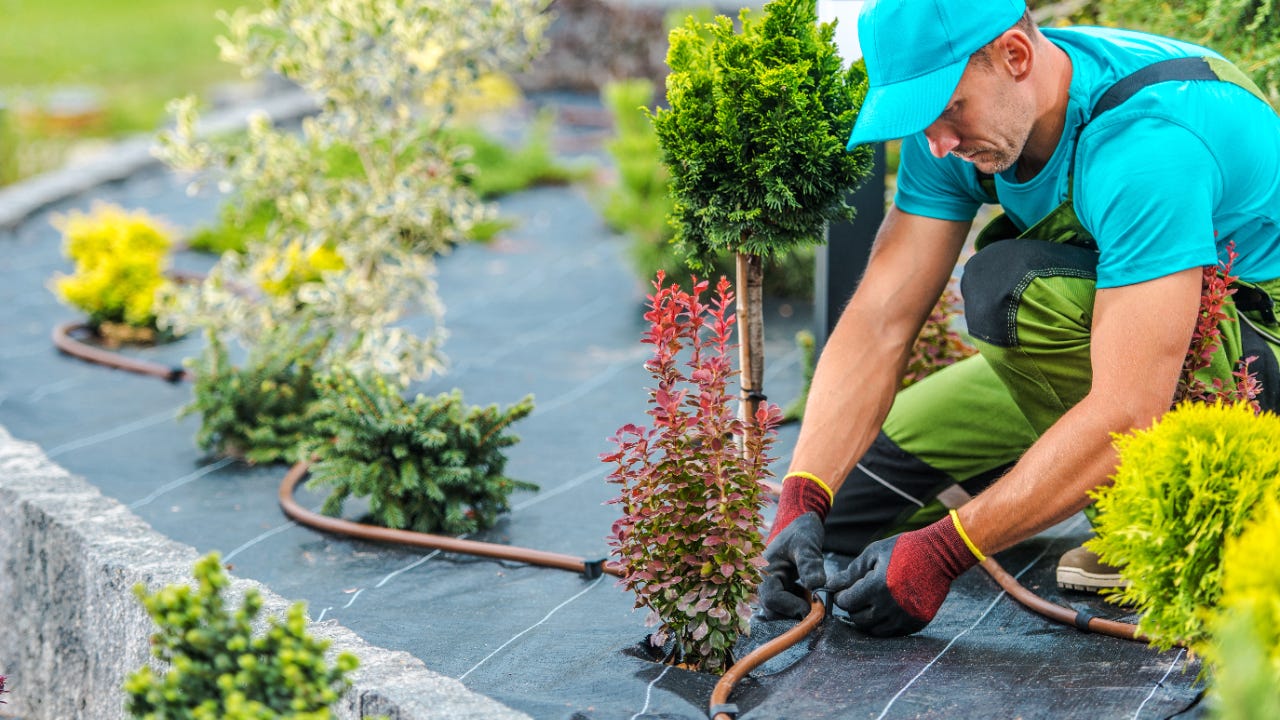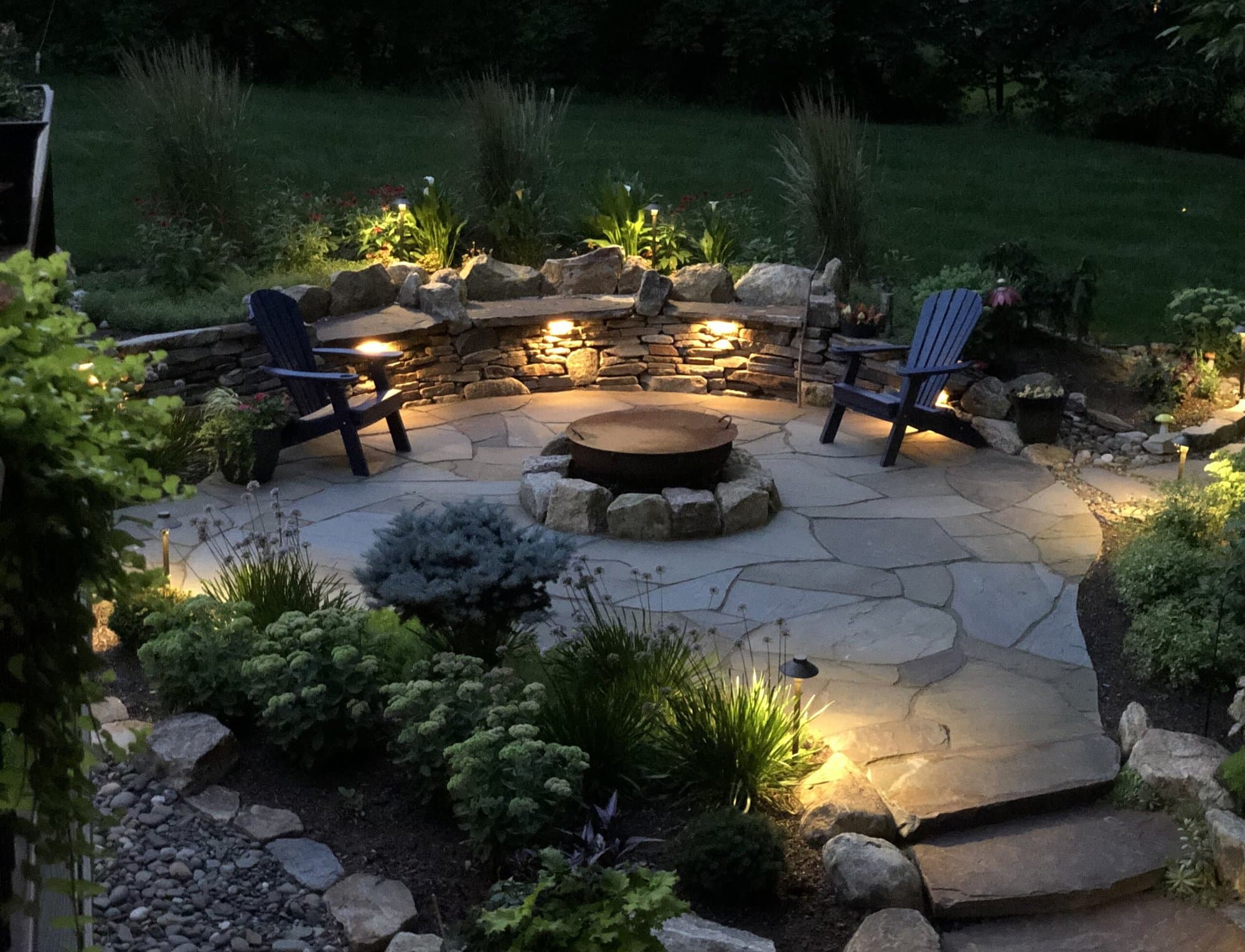Why Picking the Right Palm Desert Landscaping Solution Issues
Why Picking the Right Palm Desert Landscaping Solution Issues
Blog Article
A Comprehensive Overview to Creating and Implementing Effective Landscape Design Solutions
The art and science of landscape design expand past mere aesthetics; they entail a thoughtful integration of layout concepts, environmental stewardship, and useful execution. An extensive guide to reliable landscape design options begins with an extensive understanding of your exterior room, stressing the relevance of balance, proportion, and unity. As we discover sustainable techniques and the option of appropriate plants, the implications for biodiversity and community wellness become increasingly evident. What methods can one utilize to make sure these landscapes not only grow but additionally prosper in consistency with their surroundings?

Comprehending Landscape Layout Principles
One might wonder what foundational components add to efficient landscape layout. At its core, effective landscape style pivots on several key concepts that direct the plan and selection of elements within an area. These principles consist of unity, proportion, balance, and rhythm, each serving to create a harmonious exterior setting.
Unity refers to the cohesive partnership amongst different components, guaranteeing that they interact visually and functionally. Equilibrium can be achieved via asymmetrical or symmetrical setups, enabling the landscape to really feel secure and welcoming. Proportion includes recognizing the scale of elements in regard to each various other and the surrounding environment, advertising aesthetic harmony and comfort.

Assessing Your Outdoor Area
Before executing the principles of landscape layout, a complete analysis of your outdoor area is important. This preliminary assessment aids specify the extent of your landscape design project and makes certain that your layout lines up with the unique features of your property. Begin by evaluating the dimensions of your room, taking exact measurements to comprehend the offered location for various aspects such as pathways, patio areas, and yards.
Following, observe the existing functions of your landscape, including topography, dirt top quality, and drain patterns. These factors substantially influence plant choice and placement. Additionally, assess the sunshine exposure across different areas throughout the day, as this will certainly impact the kinds of plants that grow in your garden.
Think about the microclimates created by structures, trees, and various other obstacles, as they can influence temperature level and moisture levels. Take note of any type of existing plants or hardscape aspects that you desire to retain or get rid of. This thorough assessment prepares for a efficient and knowledgeable landscaping remedy, guaranteeing that your design is not only cosmetically pleasing but additionally useful and lasting for many years to find.
Lasting Landscape Design Strategies
Integrating sustainable landscape design methods is important for creating an eco liable outdoor space. These techniques not just advertise eco-friendly balance however likewise enhance the useful and aesthetic worth of a landscape. One fundamental method is the application of indigenous plants, which need less water and upkeep while sustaining local wildlife. Implementing reliable irrigation systems, such as drip irrigation, lessens water waste and guarantees that plants obtain ample moisture.

An additional reliable technique is the calculated positioning of trees and hedges to provide all-natural windbreaks and shade, hence lowering energy costs (Palm Desert Landscaping). Rain gardens can be integrated into the landscape layout to take care of stormwater overflow properly, filtering system pollutants prior to they enter waterways
Choosing the Right Plants
Picking the right plants for your landscape is critical to attaining both aesthetic appeal and environmental harmony. The procedure starts with an understanding of your regional climate, soil problems, and the particular microenvironments within your landscape. Examining variables such as sunlight direct exposure, dampness degrees, and existing plants will certainly assist you pick plants that thrive in your unique setting.
Take into consideration including indigenous plants, as they are well-adapted to regional conditions, need much less maintenance, and assistance regional wild animals. In addition, picking a diverse array of species can improve biodiversity while reducing the threat of disease and parasite break outs. It is important to evaluate the growth habits, growing periods, and seasonal shades of potential plants to create a natural and vibrant landscape.
Additionally, consider the intended use the space; for example, if the area will experience high foot website traffic, opt for durable ground covers. By attentively More Help selecting plants that align with both your visual goals and ecological requirements, you can produce a lasting landscape that not only boosts your property however likewise contributes positively to the bordering ecological community.

Implementation and Maintenance Techniques
When the ideal plants have been picked for your landscape, the emphasis changes to effective implementation and continuous upkeep methods. Successful setup starts with correct website preparation, that includes dirt testing to determine nutrient degrees and pH, followed by changing the soil as needed. Very carefully set up plants according to their growth behaviors and light requirements, ensuring ample spacing to advertise healthy and balanced growth.
Watering is an essential element of implementation. Develop a watering schedule that considers the particular needs of each plant species, changing for seasonal adjustments. Making use of drip watering systems can boost water performance and reduce overflow.
Upkeep methods must be executed to make certain the longevity and vigor of your landscape. Routine tasks include weeding, mulching, and pruning to control growth and stop condition. Fertilization needs to be carried out based on soil tests, useful reference giving the needed nutrients without over-fertilizing.
Monitoring for diseases and insects is crucial; early detection can avoid significant damages. Seasonal modifications to upkeep regimens, such as winterizing perennials and preparing for springtime development, will make sure that your landscape remains aesthetically attractive and healthy and balanced year-round.
Final Thought
In final thought, effective landscape design remedies require a comprehensive understanding of design concepts, precise evaluation of outdoor rooms, and the application of lasting techniques. The option of suitable plant species plays an essential duty in boosting aesthetic appeal and eco-friendly resilience - Palm Desert Landscaping. Effective execution and ongoing maintenance further make certain the durability and vigor of landscapes. By integrating these elements, landscapes can be transformed into gorgeous, functional settings that advertise biodiversity and contribute positively to area wellness.
One may wonder what fundamental aspects add to efficient landscape style. At its core, successful landscape style pivots on numerous essential concepts that guide the plan and choice of elements within an area.Selecting the right plants for your landscape is critical to attaining both visual allure and ecological consistency. It is essential to assess the growth routines, blooming periods, and seasonal shades of prospective plants to create a vibrant and cohesive landscape.
When the appropriate plants have actually been selected for your landscape, the emphasis shifts to reliable implementation and continuous upkeep strategies.
Report this page